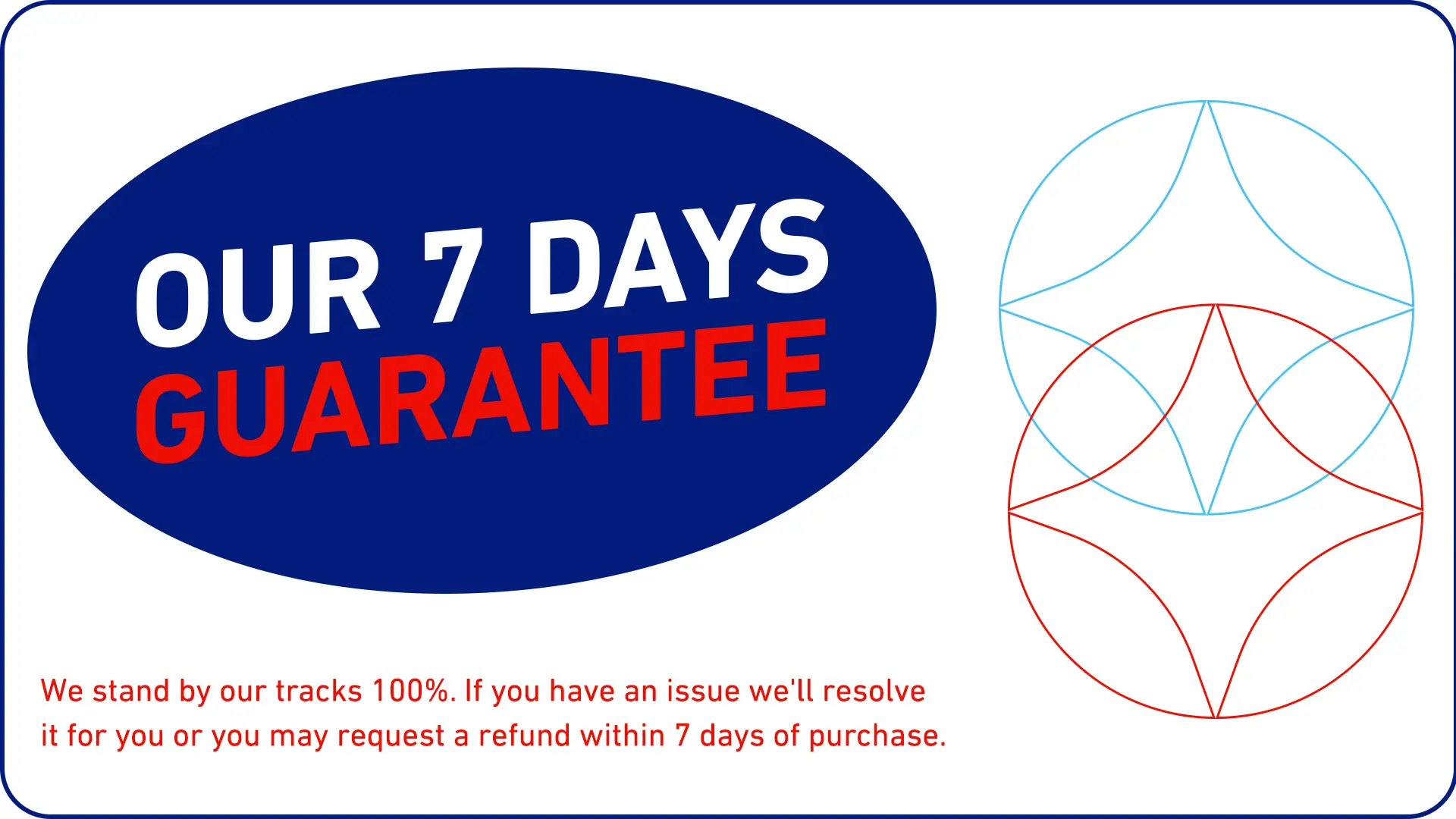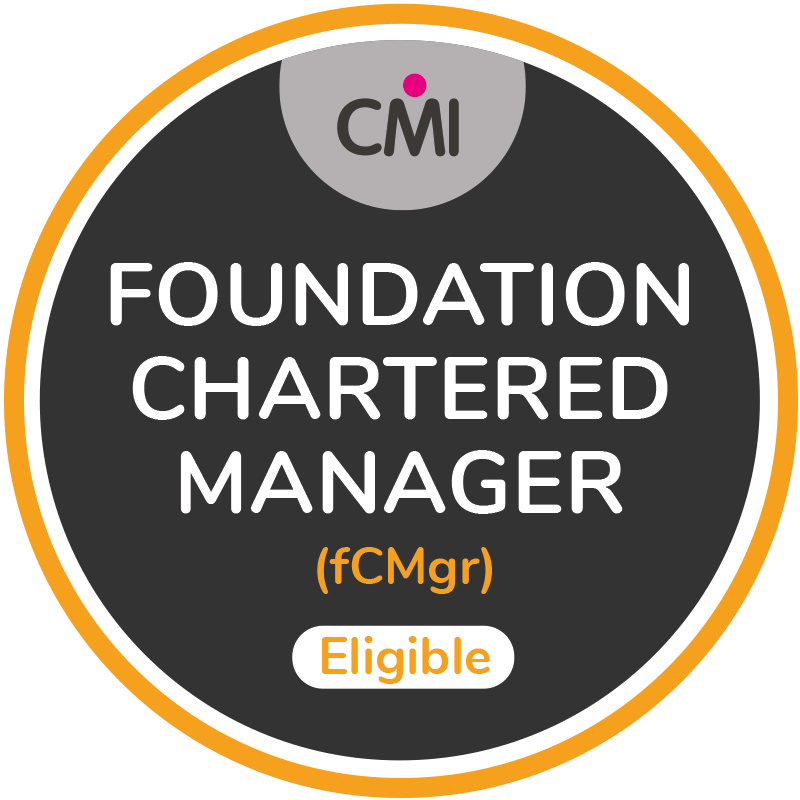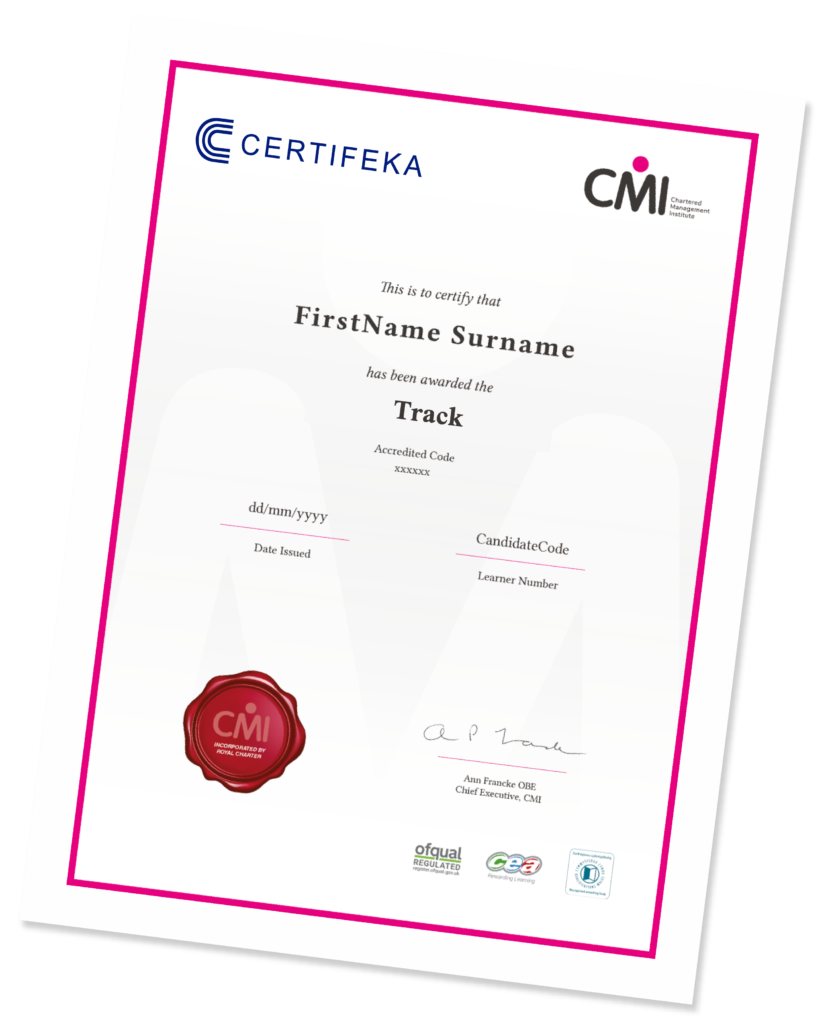Strategic Human Resources Management (SHRM) Track
September 18, 2023 2024-11-03 20:38Strategic Human Resources Management (SHRM) Track
Strategic HR Management Track
Aligning HR with organizational success
- 30% exemption from our MBA Programs
- 3 Courses
- 175 Hours
- 55 Lessons
- CMI Track Certificate
- Certifeka Certificate
- 6 Months Access

Track Overview
The Strategic Human Resources Management (SHRM) Track focuses on aligning HR practices with an organization's broader goals. It emphasizes proactive talent management, performance metrics, and fostering a positive organizational culture. By leveraging human capital for competitive advantage, this approach aims to maximize productivity and innovation. In essence, SHRM integrates HR strategies to directly contribute to the organization's long-term success.
Track Consists of 3 CMI Courses
Find the details below
1: Strategic Human Resources
Strategic Human Resource Management integrates human resources strategies with an organization's key objectives. It emphasizes proactive talent management, aligns performance metrics with business goals, fosters a conducive organizational culture, and leverages human capital for competitive advantage. Through this approach, organizations aim to maximize productivity and innovation from their workforce.
In this course, you will be introduced to:
- Strategic Workforce Planning
- Performance and Talent Management
- Competitive Compensation Strategy
- Evaluation and Continuous Improvement
- Culture and Diversity Management
- Strategic Leadership and Alignment
You can find the curriculum below:
Introduction to Strategic Human Resource Management
Strategic Human Resource Management is the alignment of HR strategies with organizational goals. It requires an understanding of factors affecting HRM strategies. Notably, SHRM plays a pivotal role in ensuring the success of strategic plans by optimizing human capital alignment.
Lessons
- HRM VS. SHRM
- Strategic HRM in Business
Strategic Alignment
Strategic alignment ensures HR strategies align with organizational goals. Recognizing factors that impact HRM strategies is vital. It is also important to understand how Strategic Human Resource Management enhances the success of strategic plans.
- Reviewing Status
- Goals Alignment
Market Analysis
Market analysis delves into evaluating a company’s current position within its industry. It involves a deep understanding of business markets and the external environment that can influence success. To navigate these complexities, gaining competitive intelligence is essential, providing insights into competitors’ strengths, weaknesses, and potential moves.
- Evaluating Current Position
- Business Markets and External Environment
- Competitive Intelligence
Competitive Advantage
Competitive advantage involves understanding the scope of the business, ensuring business alignment, optimizing organizational structure, fostering a unique organizational culture, and adopting effective leadership styles to stand out in the market.
- Understanding the scope of the business
- Business Alignment
- Organizational Structure
- Organizational Culture
- Leadership Styles
Strategic Risks and Opportunities
Understanding factors affecting HRM strategies is key in identifying strategic risks and opportunities. It’s essential to grasp how SHRM contributes to strategic plan success and how to adeptly prepare HRM strategies for optimal alignment and adaptability.
- SWOT Analysis
- GAP Analysis
SHRM Strategies
Navigating the complexities of SHRM starts with understanding the factors affecting HRM strategies. To capitalize on this knowledge, developing a strategic HRM plan that aligns human resources seamlessly with broader organizational goals is essential.
- HRM Models
- SHRM Planning
SHRM Implementation
For successful SHRM implementation, one must first understand the factors affecting HRM strategies. Using this understanding as a foundation, the next pivotal step is to develop a strategic HRM plan, ensuring that human resources initiatives align cohesively with the organization’s broader objectives.
- Staffing
- Training and Development
- Employee Separation and Retention Management
- Barriers to SHRM Implementation
2: Organizational Behavior
Organizational behavior is how individuals and groups act within organizations. It combines elements from psychology, sociology, and anthropology to understand and predict workplace behavior, enhancing organizational performance and employee well-being.
In this course, you will be introduced to:
- Worker insights.
- Boost motivation
- Enhance work
- Build trust
- Achieve goals
- Improve relations
You can find the curriculum below:
Fundamentals of leadership behavior theory and practice
Differentiates leaders from managers, studies personal leadership qualities, emphasizes team inclusion in decisions, explores leader-team interactions, observes leadership actions, and considers how social perceptions shape leadership.
Lessons
- Leadership versus Management
- Personal Leadership traits
- Role Theory of Leadership
- Participative Theories
- Working Relationships and Interaction
- Behavioral Theories
- Social Constructionism
The organizational structures & culture
Describes varied organizational models including modular and matrix. Emphasizes decentralization and the diverse functionalities of structures. Highlights the shared beliefs that influence member behavior and the value of continuous organizational learning.
Lessons
- Bureaucracies, Stakeholders, re-engineered corporation, modular, hierarchical, matrix
- Decentralization
- Line, staff & functional structures
- Organization Culture
- The Learning Organization
Business internal opportunities
Champions harnessing creativity for growth, leveraging organizational culture, learning from experiences, using metrics to evaluate success, team collaboration for diverse insights, and adeptly guiding organizational changes.
Lessons
- Innovation and creativity
- Organizational culture opportunities
- Organizational learning
- Measuring performance
- Working in teams
- Change Management
Motivational Theories
Touches on early work efficiency theories, hierarchical needs, factors influencing job satisfaction, contrasting views of employee motivation, and the mental processes driving motivation.
Lessons
- Taylorism, Mayo Theory
- Maslow, Herzberg, Theory
- McGregor, Broad theories (e.g. temporal motivation theory)
- Cognitive theory
3: Personal Development & Leadership
Personal Development involves self-improvement through enhancing skills, knowledge, and self-awareness. Leadership is the capacity to inspire and guide others, combining interpersonal skills, strategic vision, and trust-building.
In this course, you will be introduced to:
- Vision and Mission Mastery
- Strategic Management
- Team Leadership
- Financial Acumen
- Organizational Stability
- Time and Task Management
You can find the curriculum below:
Vision & strategy - The Intro
Understanding a vision statement is pivotal in setting an organization’s direction. Its importance lies in providing clarity and differentiating it from mission and goals. Whether viewed from a practical or academic lens, vision aids in the formation of mission statements, goals, values, and strategy. Successfully crafting and linking a vision to strategy becomes the cornerstone of organizational progression.
Lessons
- What is a vision, Mission, Values & Goals?
- What is planning & strategy?
- Linking the vision with the strategy
The Mindset
For a leader, the right mindset is essential in vision creation and its effective communication. Recognizing organizational strengths while navigating uncertainties ensures resilience. Mastering time management tools and techniques ensures efficiency. All these, combined with a strategic mindset, are fundamental for effectuating organizational success.
Lessons
- Describing futures with clarity
- Understanding your organization’s capabilities
- Prioritization & time management
- Strategic manager’s Effectiveness
Understanding Leadership
Leadership isn’t just a term; it’s an embodiment of influence and direction. A leader isn’t defined by the title but by their skills, competencies, and inherent strengths that motivate and guide teams towards collective goals.
Lessons
- Leadership explained
- Being a leader
- Leader’s strengths
Leader's personal contribution
A leader’s role extends beyond guidance; it involves recognizing and appraising team performance. Balancing their personality traits with professional demands is essential for sustainable leadership. Continuous personal growth, coupled with celebrating achievements, not only enhances the leader’s journey but also boosts team morale and cohesion.
Lessons
- Feedback and Performance
- Self-awareness and reflection
- Success celebration
Don’t miss the chance and enroll now for $1680 instead of $2,100 and save $420
Track Outcomes
Worker insights
Boost motivation
Enhance work
Build trust
Achieve goals
Improve relations
Vision and Mission Mastery
Strategic Management
Team Leadership
Financial Acumen
Organizational Stability
Time and Task Management
Strategic Workforce Planning
Performance and Talent Management
Competitive Compensation Strategy
Evaluation and Continuous Improvement
Culture and Diversity Management
Strategic Leadership and Alignment


CMI Recognition & Accreditation
Once you finish your Track you will be eligible to use this CMI Foundation Chartered Manager badge across your credentials

CMI Employer Accreditation offers you a unique opportunity to be able to reward your teams’ with nationally-recognised qualifications, as part of your in-house training. Give your team the competitive edge and provide them with practical tools that can be applied straight into the workplace.
CMI represents the benchmark for Management and Leadership skills. Backed by our Royal Charter, we are the only professional body able to offer Chartered status for your managers and leaders. Included with accredited solutions like: 12 months membership with CMI, offering digital resources, networking, mentoring and skills support.
The Chartered Management Institute (CMI) is the only organization that can award Chartered Manager status, the highest accolade for managers and leaders. For 75 years, we have inspired modern managers to become successful, confident leaders.
With CMI as your lifelong career partner, you will always have access to support, guidance and development opportunities to help you achieve your professional goals, and achieve the ultimate management accolade, Chartered Manager status.
Defining your strengths against CMI’s Professional Standard, their Career Journey map identifies opportunities to develop your management and leadership skills, whatever stage of your career you’re at.
Each Chartered Manager boosts their business revenue by £62k every year
74% of students on CMI accredited courses acquired the skills to lead change and innovation
81% of students on CMI accredited courses recognized their ability to develop people and capabilities






